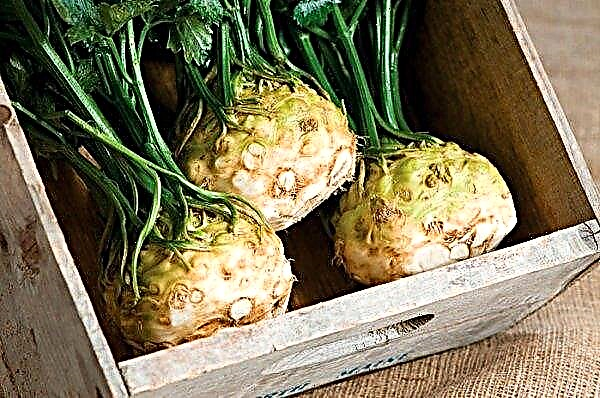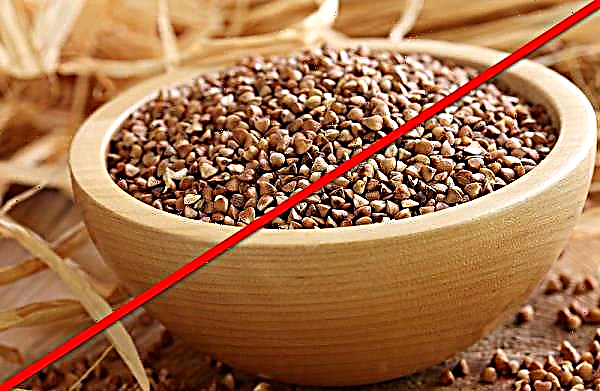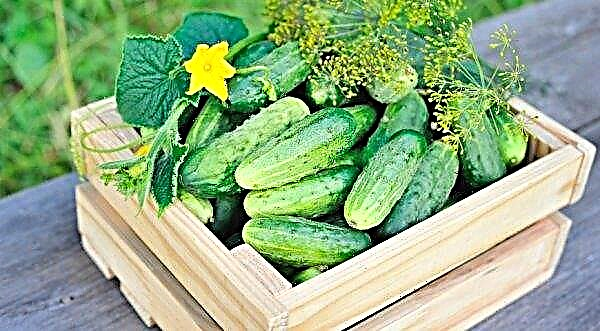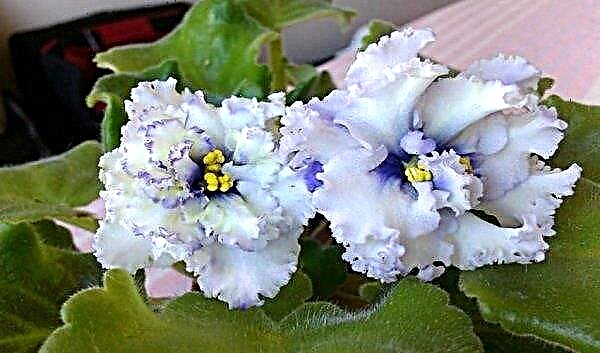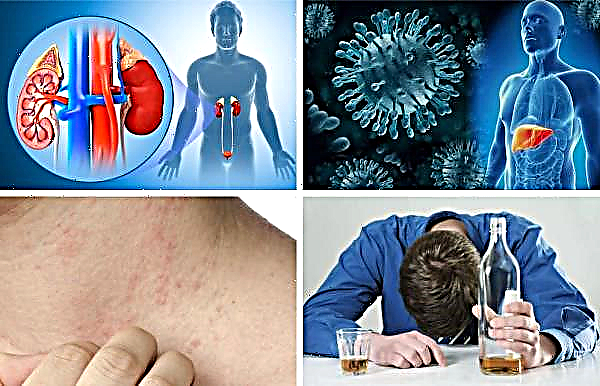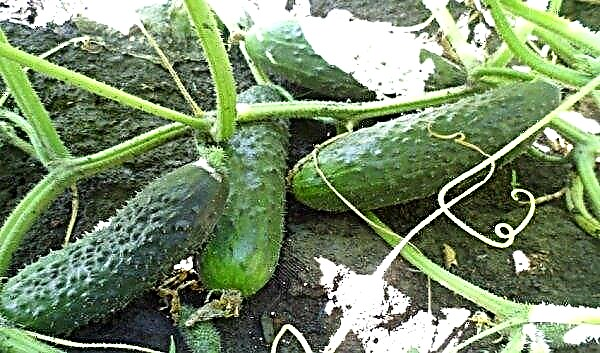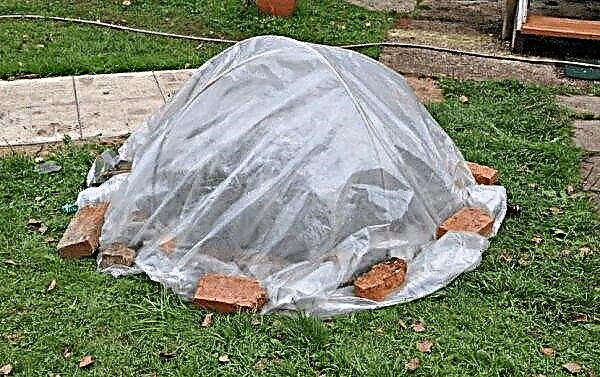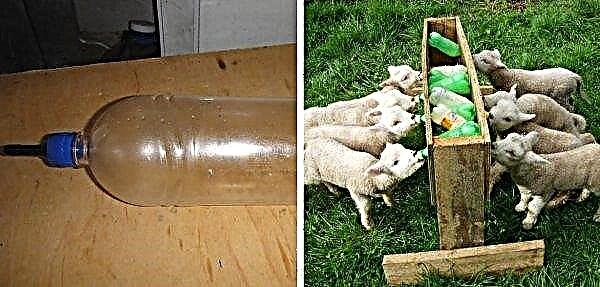Correct temperature conditions and humidity levels are fundamental factors affecting the development of embryos in an egg. If these indicators decrease or increase, the farmer runs the risk of spoiling the stuffing material or getting weak, non-viable offspring. You will learn about the rules for maintaining the level of heat and moisture in an incubator from this article.
Egg laying rules
When laying biomaterial in an incubator, observe the following points:
- All eggs must be the same size, sanitized in a weak solution of manganese and tested on an ovoscope.
- Disinfect and dry the incubator all the parts, leave it to work idle for 6-8 hours, setting the optimal mode.
- The last 10 hours before laying, keep the eggs in a warm room at a temperature of +25 ° C.
- The bookmark is held in the evening hours.
- Coat large material in an upright position with the sharp end down.
- For eggs of different sizes, the laying is carried out at different times: first, small, after 4-5 hours - medium, and after 4 hours - large.

The importance of proper temperature and humidity
At each stage of embryo development, its own temperature regime is selected. The first day requires the highest rate. This allows you to accelerate metabolic processes in the egg by 10 times. From the 2nd – 3rd day, they begin to gradually cool the eggs and stop the indicator at +37.5 ° С. At the last stage of development, the embryo is capable of independently generating heat and transferring it to the external environment, therefore, lowering the temperature is required.
Overheating or insufficient heating changes the incubation time, as well as the biochemical processes in the egg, which leads to the development of pathologies of the internal organs of the embryo or its death.
Did you know? The egg actively breathes and consumes per day 2–4 l of oxygen. Air passes through the porous shell structure. Through these pores, carbon dioxide is removed along with the liquid during the development of the embryo. Over the entire period of growth, 20% of water is removed from the egg.
The regulation of heat transfer is dependent on humidity. During all stages of development, the embryo feeds on the shell. Correctly selected humidity mode allows you to start the process of converting shells into compounds easily digestible for the embryo. Evaporated moisture is replaced by air. With an increase in humidity, eggs are biting, but young animals are not hatched. Inside the shell, an increased amount of sticky liquid mass is observed, which penetrates into the lungs of the embryo or provokes gluing it to the shell.
With an increase in humidity, eggs are biting, but young animals are not hatched. Inside the shell, an increased amount of sticky liquid mass is observed, which penetrates into the lungs of the embryo or provokes gluing it to the shell.
With a decrease in humidity, cracking of the shell occurs prematurely, but the withdrawal process is delayed. Hatched chickens are characterized by low immunity and are not very active.
Types of thermometers for measurement
The temperature in the incubator for chickens differs from that for another bird by a fraction of a degree, so you need to carefully monitor it. Heat fluctuations throughout the incubation period are 1–1.5 ° С. To understand how to check the temperature and prevent fluctuations, you need to choose the right thermometer.
At the present stage, 3 types of such devices are used:
- Electronic.
- Mercury.
- Alcoholic.
Electronic
Electronic thermometer is a progressive model that measures the exact temperature of the environment in the device.  The device itself is located outside, and inside the incubator is a probe. Indications on the scoreboard are displayed to the nearest tenth of a degree.
The device itself is located outside, and inside the incubator is a probe. Indications on the scoreboard are displayed to the nearest tenth of a degree.
Mercury
A good budget option with extreme accuracy. It is located inside the incubator next to the viewing window.
It is considered relatively safe for biological material. If the thermometer bursts, you will have to get rid of not only the eggs, but also the incubator itself, since mercury is a caustic compound, the vapor of which is quickly absorbed into the surrounding tissue.Did you know? More recently, an infrared thermometer has been created. It is equipped with a measuring element of high sensitivity, which scans the body and displays the temperature on the scoreboard. Temperature measurement takes 5 seconds.

Alcoholic
Alcohol temperature meter is the easiest and most affordable device. Despite the fact that decimal gradation is displayed on it, errors in the readings can be significant. The thermometer is located inside the incubator, and the indicators are monitored through the viewing window.
Having chosen the alcohol option, it is better to place 2-3 thermometers in the device at different ends. Of the advantages of such a device, low costs and high safety can be distinguished.
Incubator Modes
In the factory devices, a table is provided that displays the temperature regime for each day for this particular device. Compliance with the regimes allows you to organize the correct gas exchange inside the egg. When laying eggs, observe the highest possible temperature conditions and keep it for 3 days. For chickens, the optimal moisture regime at the initial stage is 60%. If necessary, at the last stage of development, additionally spray liquid on the shell to avoid overheating. How many eggs should be in the incubator depends on the size of the material and the apparatus itself. You need to calculate the number so that the eggs are placed quite freely and do not touch each other. This will allow you to organize the right gas exchange at the final stage of growth.
How many eggs should be in the incubator depends on the size of the material and the apparatus itself. You need to calculate the number so that the eggs are placed quite freely and do not touch each other. This will allow you to organize the right gas exchange at the final stage of growth.
Important! At the last stage of development, the embryo switches to pulmonary respiration. During this period, you need to open the incubator lid for 10–40 min every day, depending on the number of eggs and indoor temperature.
Optimum temperature
The temperature regime is changed in accordance with the stages of development. To do this, we suggest using a special table:
| Stages | Duration (days) | Optimum Temperature Index (° C) |
| № 1 | 1–7 | 38,0 |
| № 2 | 8–14 | 37,8 |
| № 3 | 15–18 | 37,5 |
| № 4 | 19–21 | 37,0 |
Turning over is carried out every 1-2 hours. To prevent overheating, it is necessary to control not only the microclimate inside the device, but also the surface temperature of the eggs. The end of the thermometer should be in contact with the shell. Within the normal range, up to the 11th day of development, the shell temperature is +37.5 ... + 38 ° С, after 11 days - 38.5 ... + 39 ° С. With an increase in these indicators, it is necessary to cool to +34 ... + 32 ° C by opening the incubator lid. The entire cooling process should not take more than 50 minutes.
Humidity
Humidity control also implies the use of a special table that displays the mode according to the stages of development:
| Stages | Duration (days) | Optimum Humidity Index (%) |
| № 1 | 1–7 | 60 |
| № 2 | 8–14 | 50–55 |
| № 3 | 15–18 | 45–49 |
| № 4 | 19–21 | 45 |
Why does the temperature jump in the incubator?
The temperature differences in the incubator are due to:
- indoor air temperature;
- temperature inside the egg.
Scheme of the temperature controller in the incubator
The temperature regulator is a device equipped with a sensor, which is triggered when the setpoint is lowered or increased, starting the heater or fan. The device itself is located on the surface of the incubator, and the sensor is held inside the device and is localized next to the eggs. The simplest regulator circuit:
The simplest regulator circuit:
- electronic sensors;
- connectors for wires;
- light indicator;
- mechanism for starting the operation of heaters and fans.
Important! The thermistor measures and compares indicators for 20–30 minutes. incubator work. During this time, you can not open the cover of the device, otherwise the data will be inaccurate.
Thus, the temperature and humidity in the incubator are the main factors affecting the success of chickens. Lowering or increasing these indicators equally negatively affects the survival of the brood.

